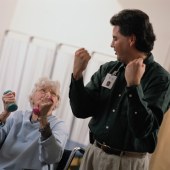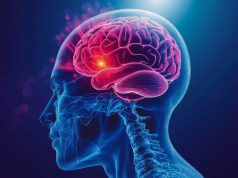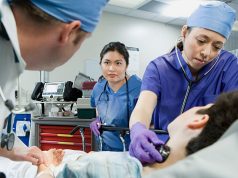Participants had been severely impaired for a year or more
FRIDAY, June 26, 2015 (HealthDay News) — Intensive physical therapy helps restore arm function in people who have survived a severe stroke, according to a new study published in the June issue of the Archives of Physical Medicine and Rehabilitation.
University of Florida researchers followed 39 patients who underwent intensive physical therapy for the arms five hours a day, five days a week, for 12 weeks. For the study, the team “enrolled people who had a stroke a year or more prior to their study participation, and who were still severely impaired,” lead researcher Janis Daly, Ph.D., a professor of neurology in the College of Medicine, said in a university news release.
Three rehabilitation methods were used. One was motor learning rehabilitation, in which patients concentrate on performing a movement as deliberately as possible and constantly repeat the movement. Another method was electrical stimulation rehabilitation, in which electrodes stimulate the muscles on the forearm and cause the hand to lift. The third method was robot-assisted rehabilitation, in which robotics software assists with arm movement. One group of patients did five hours a day of motor learning alone, while the other patients did motor learning for 3.5 hours and either electrical stimulation or robot-assisted therapy for 1.5 hours. On average, patients in all three groups doubled or nearly doubled the ability to use their stroke-affected arm, according to the researchers.
“The recovery was meaningful to patients in terms of physical function. Each person’s recovery was somewhat unique,” said Daly, who is also director of the National Veterans Affairs Brain Rehabilitation Research Center of Excellence in Gainesville. “Some had dramatic recovery, some had less,” Daly explained. “Some were able to perform functional tasks that they weren’t able to do before; some recovered the ability to move their arm so they could actually place the arm for functional tasks, for example into the sleeve of a sweater.” A larger study is needed to confirm the findings, Daly noted.
Copyright © 2015 HealthDay. All rights reserved.








